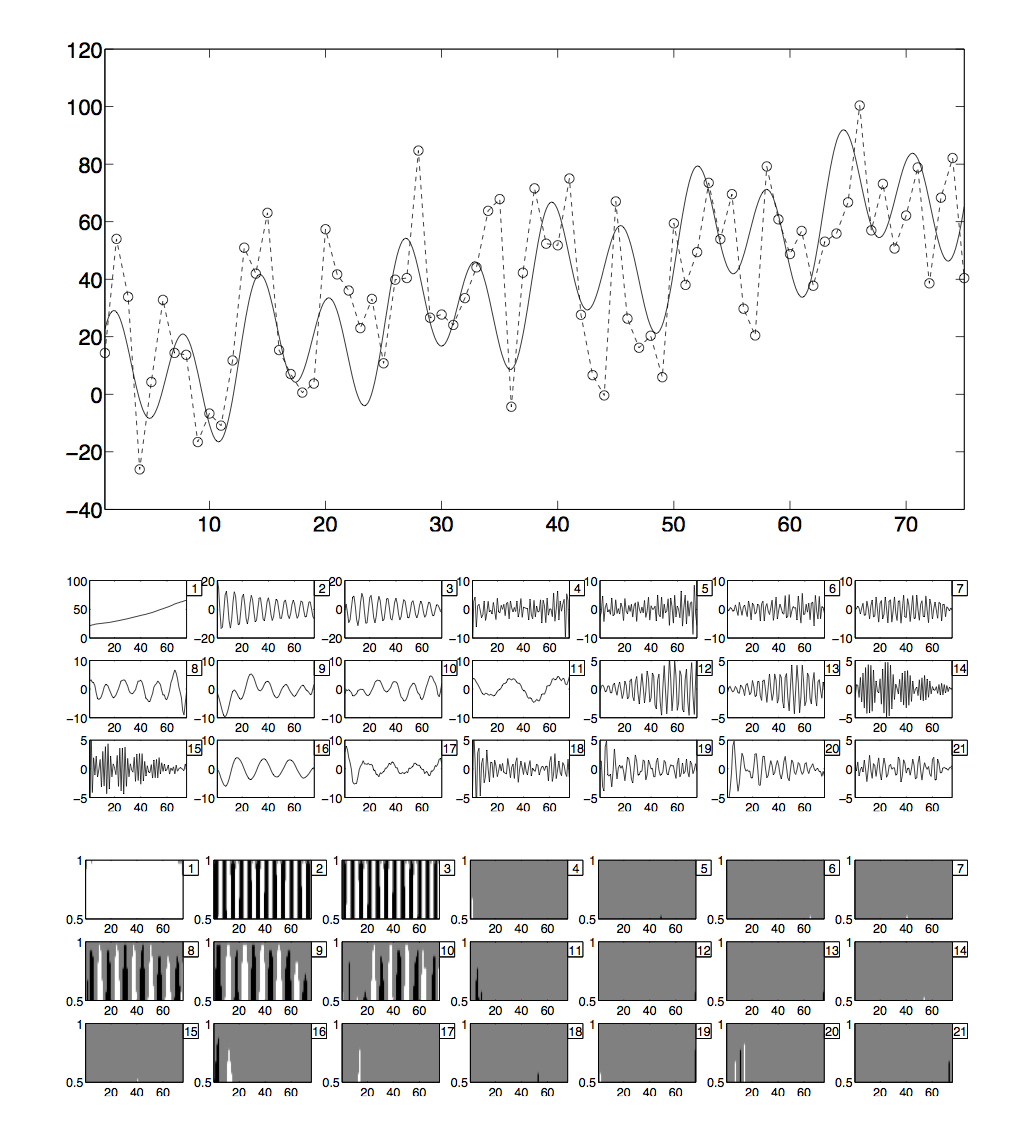Singular spectrum analysis
Singular spectrum analysis (SSA) is a method for finding structure in time series data. In its basic form, SSA involves no statistical modeling and therefore inference about the significance of the suggested signal features cannot be made. Posterior Singular Spectrum Analysis (PSSA) developed by our group combines Bayesian modeling and SSA offering a principled approach to evaluating the credibility of time series features suggested by SSA.

Top panel: An artificial example of a signal (continuous curve) and the associated observed noisy time series. The observations are marked by circles connected by the dashed line. Middle panel: The first 21 SSA components of the noisy time series. The components are listed row-wise in descending order by the magnitude of their singular value. Bottom panel: The PSSA credibility maps of the SSA components, where black and white indicate where the slope of the component time series in question is deemed to be negative or positive with the posterior probability indicated by the vertical axis. Gray indicates that the slope is not credibly non-zero.
Selected papers:
- L. Holmström and I. Launonen. Posterior singular spectrum analysis. Statistical Analysis and Data Mining, 6(5):387-402, 2013. Available on-line at http://dx.doi.org/10.1002/sam.11195 . Preprint available at http://cc.oulu.fi/~llh/preprints/PSSA.pdf.
- A.E.K. Ojala, I. Launonen, L. Holmström, and M. Tiljander. Effects of solar forcing and North Atlantic oscillation on the climat e of continental Scandinavia during the Holocene. Quaternary Science Reviews, 112(0):153 - 171, 2015. Available on-line at http://dx.doi.org/10.1016/j.quascirev.2015.01.021.
- I. Launonen and L. Holmström. Multivariate posterior singular spectrum analysis. Statistical Methods & Applications, 26(3):361 - 382, 2017. Available on-line at http://dx.doi.org/10.1007/s10260-016-0372-9.